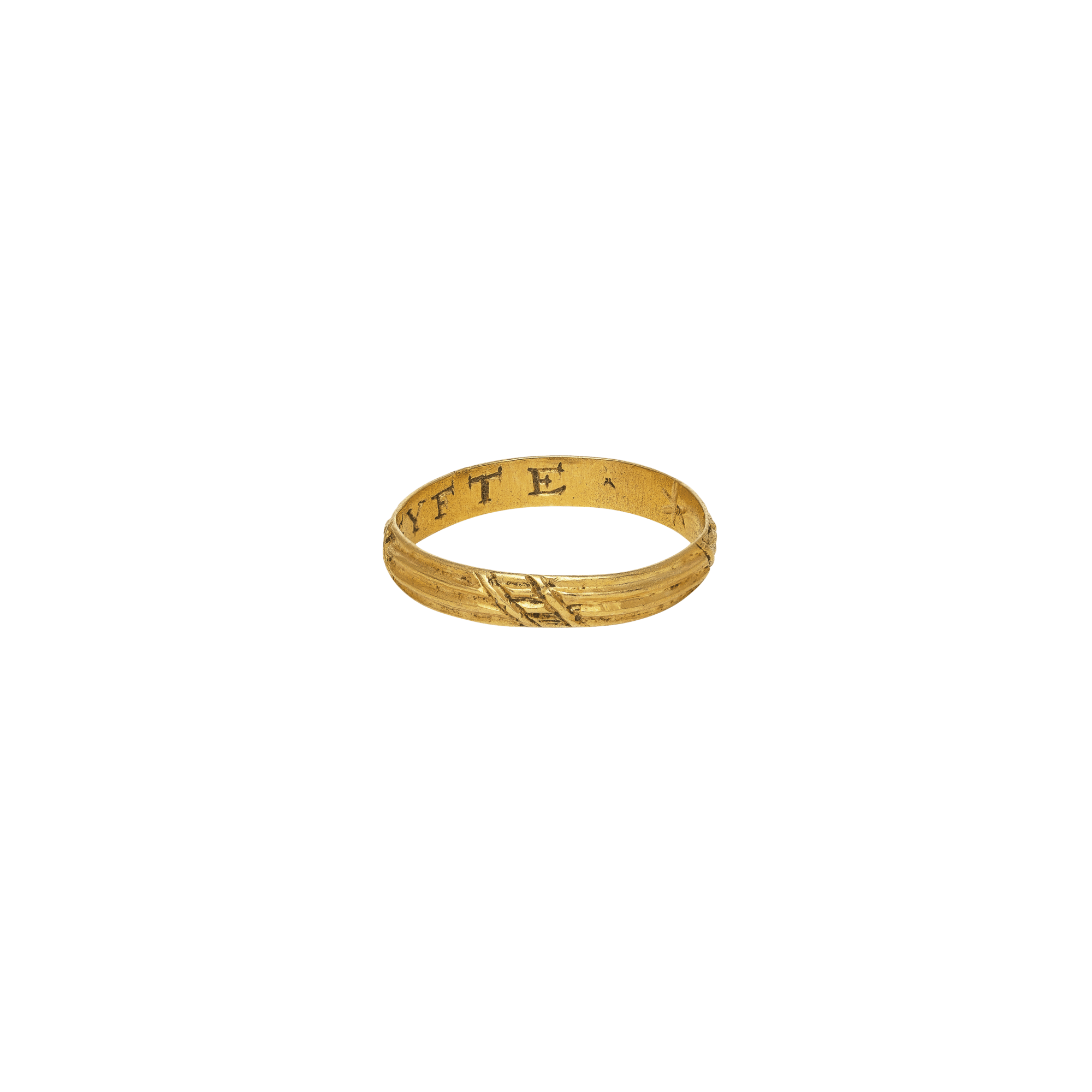


Posy Ring *XSEPE x MI x GYFTE*
, England, late 16th – early 17th centuryPosy Ring *XSEPE x MI x GYFTE*









Description
Gold band with D-section, fluted on the exterior with four diagonal ribbon-like bands and on the interior engraved with the inscription in Roman capitals: XSEPE x MI x GYFTE *. The ring shows signs of wear through age and is in good wearable condition.
“Posy rings,” their name deriving from the word poésie or poetry, are rings with sayings either in prose or verse. Like here, the love message was often concealed inside the hoop and its content only known to the giver and recipient. They find mention in plays by William Shakespeare, such as Hamlet and the Merchant of Venice, and throughout the seventeenth and eighteenth centuries they remained popular. They were traditionally exchanged between friends, family, and lovers, or given as betrothal or wedding rings.
Here the motto may be part Latin and English and is to be read as “protect my gift,” probably alluding both to the gift of friendship or love and to the ring itself. This may explain the rare ornamentation on the exterior of the ring with reed-like motif appearing like a fence or wreath. For the interpretation of the inscription compare a ring in the British Museum, London, with Latin word “SEPES” (Dalton 1912, no. 953), which stands for the word fence.
A posy ring with grooved horizontal lines along the band and enamel appear on an early seventeenth-century example in the Museum of London (A16051)
Provenance:
In 1957, the ring was found by the vendor in Market Harborough (Leicestershire).
Literature:
For a history of posy rings with extensive examples ranging from the medieval period to eighteenth century, see: Scarisbrick 2021 and further information on posies: Evans, 1931; Anon., A Garland of Love: A Collection of Posy-Ring Mottoes, London 1907; Dalton 1912, pp. 174 ff.; Scarisbrick 2007, pp. 74 ff., Taylor and Scarisbrick 1978; Oman 1974, pp.